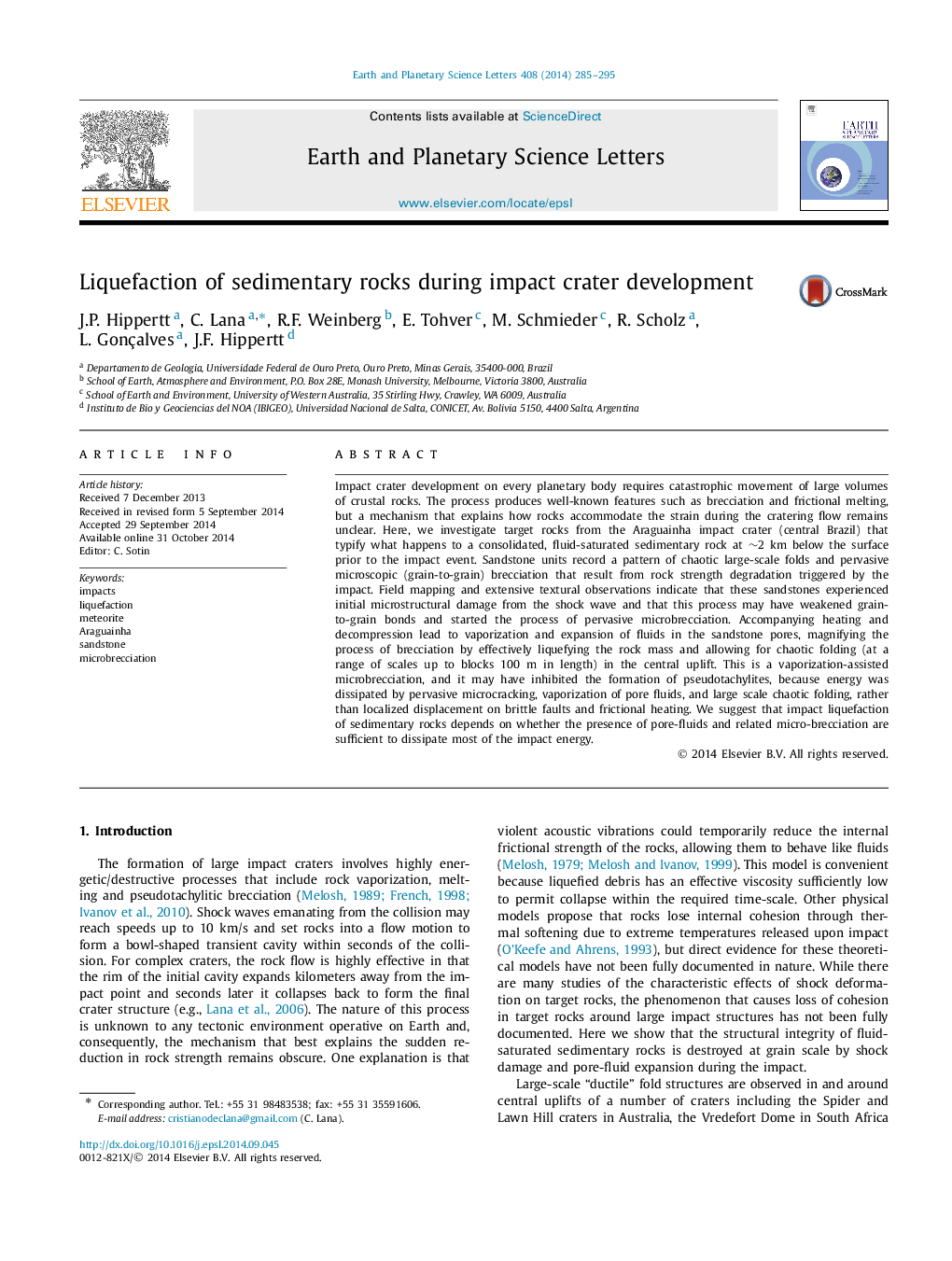| کد مقاله | کد نشریه | سال انتشار | مقاله انگلیسی | نسخه تمام متن |
|---|---|---|---|---|
| 6428713 | 1634748 | 2014 | 11 صفحه PDF | دانلود رایگان |
- Large-scale convoluted folding resulted from rock liquefaction during crater development.
- Folding is linked to instant loss of cohesion via pervasive grain-to-grain microbrecciation.
- The initial microstructural damage occurred with the passage of the shock wave.
- Accompanying vaporization and expansion of fluids effectively liquefied the rock mass.
- Liquefaction of rocks depends on the presence of pore-fluids and intensity of microbrecciation.
Impact crater development on every planetary body requires catastrophic movement of large volumes of crustal rocks. The process produces well-known features such as brecciation and frictional melting, but a mechanism that explains how rocks accommodate the strain during the cratering flow remains unclear. Here, we investigate target rocks from the Araguainha impact crater (central Brazil) that typify what happens to a consolidated, fluid-saturated sedimentary rock at â¼2km below the surface prior to the impact event. Sandstone units record a pattern of chaotic large-scale folds and pervasive microscopic (grain-to-grain) brecciation that result from rock strength degradation triggered by the impact. Field mapping and extensive textural observations indicate that these sandstones experienced initial microstructural damage from the shock wave and that this process may have weakened grain-to-grain bonds and started the process of pervasive microbrecciation. Accompanying heating and decompression lead to vaporization and expansion of fluids in the sandstone pores, magnifying the process of brecciation by effectively liquefying the rock mass and allowing for chaotic folding (at a range of scales up to blocks 100 m in length) in the central uplift. This is a vaporization-assisted microbrecciation, and it may have inhibited the formation of pseudotachylites, because energy was dissipated by pervasive microcracking, vaporization of pore fluids, and large scale chaotic folding, rather than localized displacement on brittle faults and frictional heating. We suggest that impact liquefaction of sedimentary rocks depends on whether the presence of pore-fluids and related micro-brecciation are sufficient to dissipate most of the impact energy.
Journal: Earth and Planetary Science Letters - Volume 408, 15 December 2014, Pages 285-295
